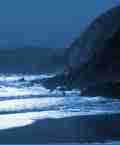 |
Search the site:

 Irish Place Names The history and topography of a country are usually reflected in its place-names, as recorded in the languages of the people who have settled there, and this is certainly true of Ireland, both in the Republic and in Northern Ireland. Ireland's history begins with a rather misty, semi-legendary period dominated by the names of pagan and Christian chiefs, rulers and saints, and many of these appear in place-names throughout the land. The country's later history involves first, the Anglo-Norman invasion begun by Richard de Clare ('Strongbow') in 1170 and second, the English and Scottish settlements ('Plantations') of the sixteenth and seventeenth centuries. Here, the personal names are generally better documented, although local knowledge and research is often needed to determine, for example, who the Font of Fontstown was, or the Bennett of Bennettsbridge. To judge by its place-names alone, whether they contain a personal name or not, Ireland is revealed as a land that contains (or contained, since many are now non-existent or in ruins) a wealth of churches, monasteries, abbeys and religious establishments on the one hand, and a formidable array of forts, castles, strongholds and defensive posts on the other. Place-names abound with words such as cill, mainistir, dun, caiseal, rath, and lios, denoting different types of religious and military settlements, and most such names have, in their other half, if not a personal name then a descriptive word or a topographical feature as a defining element.
From the Appletree Press title: Irish Place Names. [ Back to Top ] All Material © 1999-2005 Irelandseye.com and contributors | ||||||||||||
 |
||||||||||||